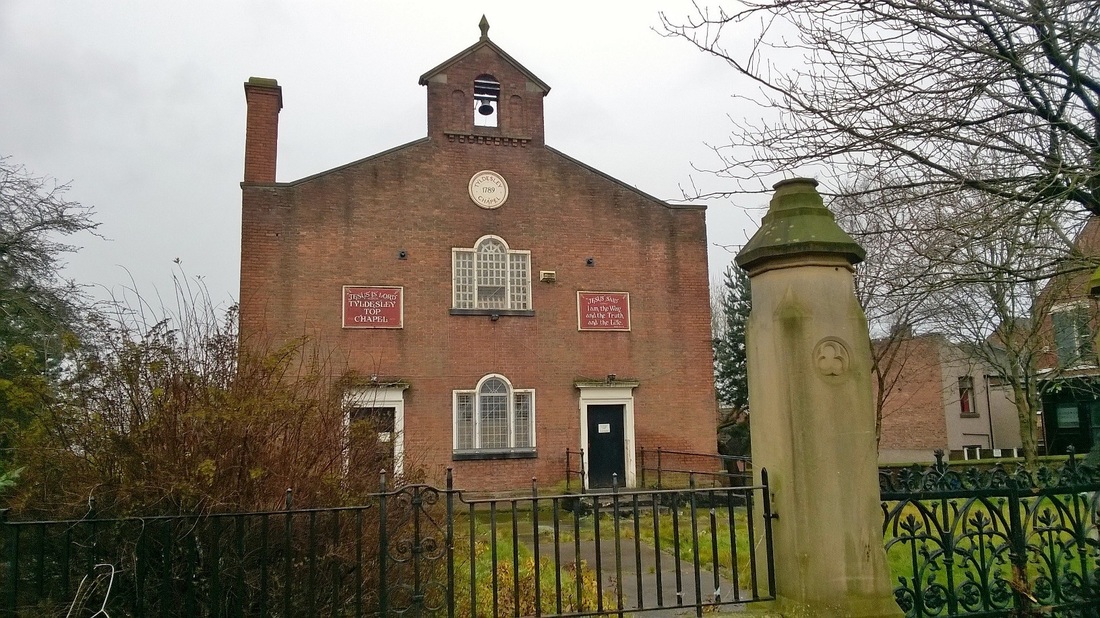The chapel was built in 1789 on a site at the top of Tyldesley Banks opposite the Square. The site was provided by Thomas Johnson who was a local landowner, merchant, entrepreneur and mill owner who acquired what was known as the Banks Estate in 1742.
It was properly known as "The Lady Huntingdon Chapel" but became known as Top Chapel because of its position at the top of Astley Street. Its first minister was J. Johnson who was ordained at Spa Fields London by the Countess of Huntingdon Connexion.
The chapel is constructed of brickwork in Flemish bond and its gabled facade is topped by a later 19th Century bellcote with a single bell.
In 1947 the part of the graveyard to the East was removed to enable the widening of the road.
This building was the test bed for a revolutionary heating system. John Grundy Senior was born locally in 1807, he was a grocer and flour trader and a warden of the Top Chapel. Due to the cold both in the chapel and within his own premesis he developed and installed a revolutionary warm-air heating stove with an arrangement of plenum and discharge ducts.
This was so successful that in 1859 he set up in business to manufacture and market his heating apparatus, which he later patented. The business flourished and he continued to make improvements, increasing its efficiency and effectiveness and securing more patents. When he died in 1879 his son John Grundy Junior, (born in 1844) took over and expanded the business. In the 1880s, he moved to live in Islington and opened three London offices. The firm became so successful that he set up his own iron foundry in Tyldesley.
The Grundy stove became well known in the industry and in 1897 (the year of the founding of The Institution of Heating & Ventilating Engineers) he could claim to have heated some 3000 places of worship, including many famous cathedrals as well as mansions, houses, hotels, hospitals, schools, warehouses, factories and workhouses. The firm advertised ‘Winter, warmth and comfort — pure warm air’. John Grundy was one of the entrepreneurs who established the IHVE and in 1898 he was elected the first president. He died in 1913. His son Herbert Hamilton Grundy took over the business and served as IHVE President in 1915. Herbert died in 1932 but the stoves were so well-liked that manufacture continued into the 1970s.

 RSS Feed
RSS Feed
